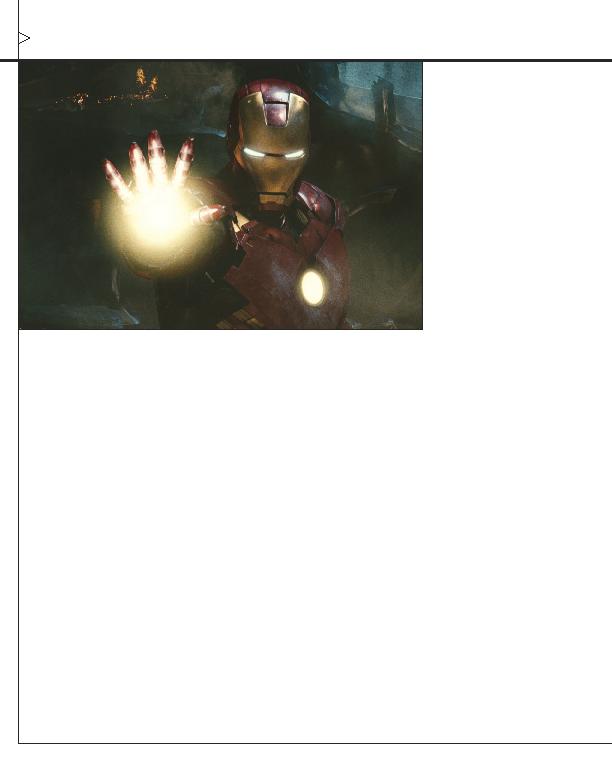
of two back-to-back tentpole films. "Your
guess is as good as mine," he laughs. "I've
been in Hollywood for about 20 years now.
Everyone has a weird road in this town and
mine's no different, I guess."
film, who suggested Theroux might be a
good fit with Marvel Studios. A fan of "Iron
Man" comics as a kid, Theroux was excited
for the meeting. "I went when they were
gearing up for the very first initial push into
development for Iron Man 2," the screen-
writer recalls. "I sat with them for a long
time and had long discussions about the
character and world. Shortly thereafter, they
said they'd love to have me and I was com-
pletely flattered and floored, and we started
developing the script right away." With di-
rector Jon Favreau working on Couples Re-
treat for portions of the time, they would
meet as often as possible for long sessions
with Downey, Marvel executive Kevin Feige
had the benefits of doing [the first Iron Man]
and were well versed in the pitfalls and prob-
lems of where certain ideas could take you.
They were great at helping me eliminate cer-
tain things that I otherwise might waste time
spinning my wheels in."
that was obviously on the table that we
could not ignore was that [Tony Stark] was a
public figure," Theroux says. "That was the
first little piece of clay that we knew we'd
have to build off of." The filmmakers quickly
realized that there was a form of overconfi-
dence and a whole new type of celebrity that
paired well with the idea of Stark (Downey)
being a public superhero. "So there's sort of
an arrogance to Tony at the beginning of the
movie," Theroux explains. Much of this
comes from Stark knowing he's the only per-
son in the world in possession of the Arc Re-
actor technology that makes the Iron Man
armor possible. "The next dramatic device
is... what if he's not?" Theroux asks. "What
he makes it -- or almost as good?"
of the bottle, fed the next major idea
Theroux bounced around with Favreau
and Feige. "It's an arms race essentially,"
the writer says. While they sifted
through the enormous list of Iron Man
villains that such an idea could plug into,
Favreau was struck with a new take on
the character of Whiplash, a villain best
remembered for a bright purple cape and
a huge topknot. "Once Jon pitched the
way he envisioned that character, which
was very different from a guy with a big
ponytail and a cape, we thought [it was]
very cool. [Whiplash has] these big ener-
gized whips emanating from his center
chest piece. It all organically started to
take shape." Further discussions resulted
in a new backstory for Whiplash (Mickey
Rourke), tying him to the earlier, less
morally responsible history of Stark En-
terprises, which gave Theroux even more
to work with. "We ended up getting
three new characters for this movie --
Whiplash, Black Widow (Scarlett Jo-
hansson) and Justin Hammer (Sam
Rockwell) -- and realizing there was a
very powerful dynamic between them."
"Are men islands in themselves, especially if
you're Tony Stark?" the screenwriter won-
ders. This theme revolved around the addi-
tion of a later element from the "Iron Man"
mythology, the heavily armed War Machine
suit. "Our thinking was that Tony is out in
the world and has perhaps bitten off more
than he can chew. Without giving away too
much, the War Machine armor -- and who's
using it -- really complements that idea and
theme. I found it a relief to have that char-
acter in the movie."
film was not because of any mandate from
Marvel that required him to include a cer-
tain number of characters or classic elements
such as Tony Stark's revamped briefcase
armor. "To their credit, they really do give
everyone involved in the process a blank
slate to start with," he says. "That's a blessing
and a curse. In the end, it always ends up
being beneficial to them. You go in knowing
anything is a possibility and they don't shut